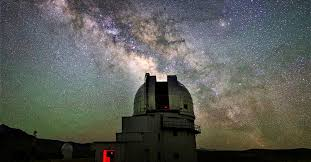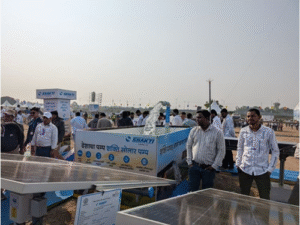GROWTH-India is India’s first fully robotic telescope, which became operational on June 12, 2018, at the Indian Astronomical Observatory (IAO), Hanle, Ladakh. It is a major step in India’s astronomical research and is designed to study transient astronomical events, such as supernovae, gamma-ray bursts, and gravitational wave counterparts.
Key Facts about GROWTH-India Telescope:
- First Robotic Telescope in India
Unlike traditional telescopes that require manual operation, GROWTH-India is fully automated and can operate without human intervention.
It autonomously tracks, observes, and records celestial events as they happen.
- Part of an International Network (GROWTH Project)
GROWTH stands for Global Relay of Observatories Watching Transients Happen.
It is a multi-country collaborative network of telescopes spread across different time zones to ensure continuous, 24-hour monitoring of transient events.
Other participating countries include the USA, Japan, Israel, Germany, Taiwan, the UK, and Sweden.
- Location – Hanle, Ladakh
The high-altitude, dry climate, and clear skies of Hanle make it one of the best locations in the world for astronomical observations.
It is housed at the Indian Astronomical Observatory (IAO), operated by the Indian Institute of Astrophysics (IIA), Bengaluru.
- Research Focus – Observing Transients
GROWTH-India is dedicated to studying transient astronomical events, including:
Supernovae (exploding stars)
Gamma-ray bursts
Gravitational wave sources (like neutron star mergers, linked to LIGO detections)
Fast radio bursts
- Indian Contribution and Global Impact
Developed jointly by IIA, Bengaluru, and IIT Bombay, with support from the Science and Engineering Research Board (SERB), Government of India.
Supports India’s participation in gravitational wave astronomy (linked to LIGO-India).
Strengthens India’s role in global astronomy and multi-wavelength observations.
Supports the follow-up of gravitational wave discoveries (e.g., neutron star mergers).
Enhances India’s technological capabilities in automated and robotic astronomy.
GROWTH-India marks a new era in observational astronomy, placing India at the forefront of global transient event studies.







